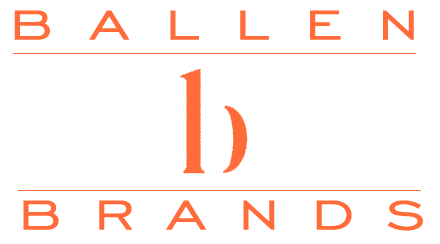One of the most vital things for any website owner is regularly auditing their website. An audit allows you to track your website’s performance and identify any potential issues you or your web developer need to fix. By using a website audit checklist, you can be sure that you cover all of the essential bases. Here’s what you need to know.
What is a Website Audit?
If you’re like most business owners, you understand the importance of having a website. Your website is often the first contact between you and your potential customers. It’s essential to ensure that your website is up to date, well-designed, and easy to use. That’s where a website audit comes in.
A website audit is a comprehensive review of your website, intending to identify any areas that need improvement. The audit process can vary depending on the size and complexity of your website, but it typically includes an evaluation of your site’s content, design, usability, and SEO. By auditing your website regularly, you can ensure that it continues to meet the needs of your business and your customers.
One: Get a Baseline of Your Website's Performance
A baseline reading is an important starting point for website performance auditing, including organic traffic, because it provides a snapshot of your current website’s effectiveness. This information can help you identify problem areas that need attention and track your progress as you work to improve your website’s performance.
In addition, a baseline reading can help you benchmark your website against other websites in your industry.
By understanding your website’s effectiveness in gaining more traffic and attracting more leads, you can set realistic goals for improvement.
The bottom line is that a baseline reading is an essential tool for any organization committed to improving its website’s performance. Without this information, it would be difficult to assess the impact of changes and gauge whether you’re making progress.
To get a baseline reading for your website, use resources such as Google Analytics, Google Search Console, Clicky.com, SpyFu, SEMrush, or other tools for tracking and measuring your website’s growth.
Two: Check Keyword Rankings
Keyword rankings are often one of the first things people look at when improving their website’s performance.
Essentially, keyword rankings measure how well your website is doing in search engine optimization. They consider several factors, including the number of times your keywords appear on your website, the frequency with which you use them throughout subheadings and paragraphs, and the quality of your content.
In short, keyword rankings can be a valuable metric for determining the success of your SEO efforts.
Three: Remove or Update Low-Performing Content
It’s no secret that Google’s algorithms are constantly evolving, which means your website needs to grow with them. One of the most critical aspects of this is ensuring that your site’s content is high-quality and relevant.
If you have pages on your site that are outdated or no longer accurate, it’s vital to remove or update them so that Google doesn’t continue to index them. It’s important to correct bad indexing because low-quality or irrelevant content can drag down the rest of your site, affecting your ranking in search results.
Furthermore, if Google detects that you’re not keeping your content up to date, it may lower your overall PageRank. So, if you want to keep your website visible and relevant, it’s crucial to regularly review and update your content.
You also want your content to be valuable to your website viewers, leads, and clients. That means creating content that is informative, helpful, and engaging.
If you’re unsure whether your content is up to par, consider conducting a content audit. This process involves reviewing all the content on your website and assessing its quality. As part of the audit, you can also identify any gaps in your content and determine what kinds of new content would be most helpful for your audience.
Four: Check for Broken Links or Images
Broken links and images can make for a frustrating user experience and hurt your website’s performance.
That’s because broken links appear as a sign of a low-quality or out-of-date website. When search engine crawlers come across them, they may assume that you’ve been neglecting your entire site. As a result, your website’s ranking could suffer.
The same is true of broken images. If an image doesn’t load properly, it can show that your website is unreliable. Furthermore, broken images can slow down your website, hurting your ranking.
It’s essential to check your website regularly for broken links and images to avoid these problems. You can use a tool like Screaming Frog to identify any broken links on your site.
Five: Redirect 404 Error Messages
If you do find any broken links on your site, it’s important to redirect them so that users redirect to the correct page. Redirects can be done using a 301 redirect, a server-side redirect that tells search engines that a page has permanently moved.
When used correctly, 301 redirects can help improve your website’s usability and search engine optimization.
Six: Analyze Your Backlinks
Backlinks are links from other websites to your website. They’re an important part of SEO because they show search engines that your site is popular and relevant.
The number and quality of your backlinks can impact your website’s ranking in search results. So if you want to improve your website’s performance, it’s important to regularly analyze your backlinks.
You can use several different tools to do this, including Google Search Console and Moz’s Open Site Explorer.
Both tools will show you which websites are linking to your site and the quality of those links.
Seven: Improve Your Website's Load Speed
Website load speed is one of the most important factors in SEO.
That’s because if your website takes too long to load, users will likely leave before it can load fully. Slow low speeds can hurt your website’s ranking because it signals search engines that your site is not user-friendly.
To avoid this problem, it’s important to regularly check your website’s load speed and take steps to improve it.
Several different factors can affect your website’s load speed, including the size of your images, the length of your videos, and the code on your website.
You can use Google’s Page Speed Insights tool to see how your website stacks up.
Eight: Check Your Website's SEO Structure
Your website’s SEO structure is the way your website is organized and how your content is laid out.
Website SEO structure includes your website’s navigation, title tags, and meta descriptions.
Your website’s SEO structure plays a big role in its search engine optimization. It tells search engines what your website is about and how to index your content.
To make sure your website is optimally structured for SEO, you should regularly check your website’s title tags, meta descriptions, and navigation.
Nine: Find and Correct Indexing Issues
If your website’s content is not being indexed properly by search engines, it will not rank as highly in search results.
To avoid this problem, it’s important to regularly check for and correct any indexing issues on your website. Indexing issues are usually caused by problems with your website’s code or structure.
To find and correct indexing issues on your website, you can use Google Search Console. This tool will show you which pages on your website are not being indexed properly.
Ten: Make Your Website Mobile-Friendly
As more and more people use mobile devices to access the internet, it’s become increasingly important to make sure your website is designed for mobile.
If your website isn’t mobile-friendly, you’re at risk of losing potential customers and clients who will simply move on to a competitor’s site that is designed for their mobile device.
What’s more, Google has stated that mobile-friendliness is now a ranking factor in its search algorithms. So if you want your website to rank well in search results, you need to make sure it’s designed for mobile.
Fortunately, there are several ways to make your website mobile-friendly. If you’re using a content management system like WordPress, mobile-friendly themes and plugins are available.
You can also use responsive design, which means your website will automatically adjust to fit any device’s screen size.
Ten: Design, Navigation, and User Experience
Your website’s design, navigation, and user experience are all important factors in its overall performance.
To ensure your website is designed optimally for both users and search engines, you should regularly check these three areas and make changes.
Design: Your website’s design should be clean and uncluttered. It should also be easy to navigate.
Navigation: Your website’s navigation should be easy to use and logical.
User Experience: Your website’s user experience should be positive. A positive user experience means your site should be easy to use and provide value.
Eleven: Website Updates and Plugins
Your website should be regularly updated with new content and plugins. New content keeps your site fresh and relevant, while new plugins can improve your site’s performance. However, plugins that need to be updated might cause issues with your website.
To ensure your website is performing at its best, you should regularly check for updates and plugin compatibility. You can do this by checking your content management system’s website or contacting your web developer.
Twelve: Website Security
Your website’s security is important for two reasons. First, it protects your site from being hacked. Second, it protects your visitors’ data.
To keep your website secure, you should regularly change your passwords, update your security software, and back up your website.
Thirteen: Compare Your Website to the Competition
To make sure your website is performing as well as it should, you need to regularly compare it to the competition.
Start by doing a Google search for your main keywords. Then, take a look at the websites that come up with the top results.
Pay attention to their design, navigation, and content. Are they doing something that you’re not? If so, try to replicate their success on your own website.
Fourteen: DIY vs. Hiring a Pro Web Design Company?
Every website owner should audit their site regularly to ensure it is functioning properly and effectively. There are many rewards to auditing your own website, including gaining a better understanding of how your site works, discovering any potential problems early on, and saving money by avoiding the need to hire a professional.
However, there are also some risks associated with auditing your own website. Without the proper knowledge or expertise, you could miss important details or make changes that could actually do more harm than good.
For this reason, it is always best to consult with a professional web design company before making any changes to your website.
A reputable web design company will have the experience and knowledge necessary to properly audit your site and make recommendations that will improve its overall effectiveness. While there may be some cost involved in hiring a web design company, the peace of mind and expert guidance they can provide is well worth the investment.
Fifteen: Schedule Routine Audits
Audits aren’t a one-and-done project. To keep your website performing at its best, you need to schedule routine audits.
How often you should audit your website depends on a number of factors, including how often you make changes to your site, the size of your site, and the complexity of your site.
As a rule of thumb, it is best to audit your website at least once a year. However, if you are making significant changes to your site or experience any problems, you should audit your site more frequently.
By regularly auditing your website, you can catch potential problems early on and prevent them from becoming bigger issues. Additionally, routine audits will help you keep your website up-to-date and looking its best.
Conclusion
Performing regular website audits is important for maintaining your website, so it performs at its best. Website audits help to increase website traffic, get more leads, and close more sales. By ensuring that your website is regularly audited, you can be sure that it is performing optimally and that your online presence is strong.
While there are many ways to perform a website audit, some of the most important elements include checking for broken links, assessing site speed, and reviewing your content strategy.
By taking the time to perform regular website audits, you can be sure that your website is achieving its full potential.


